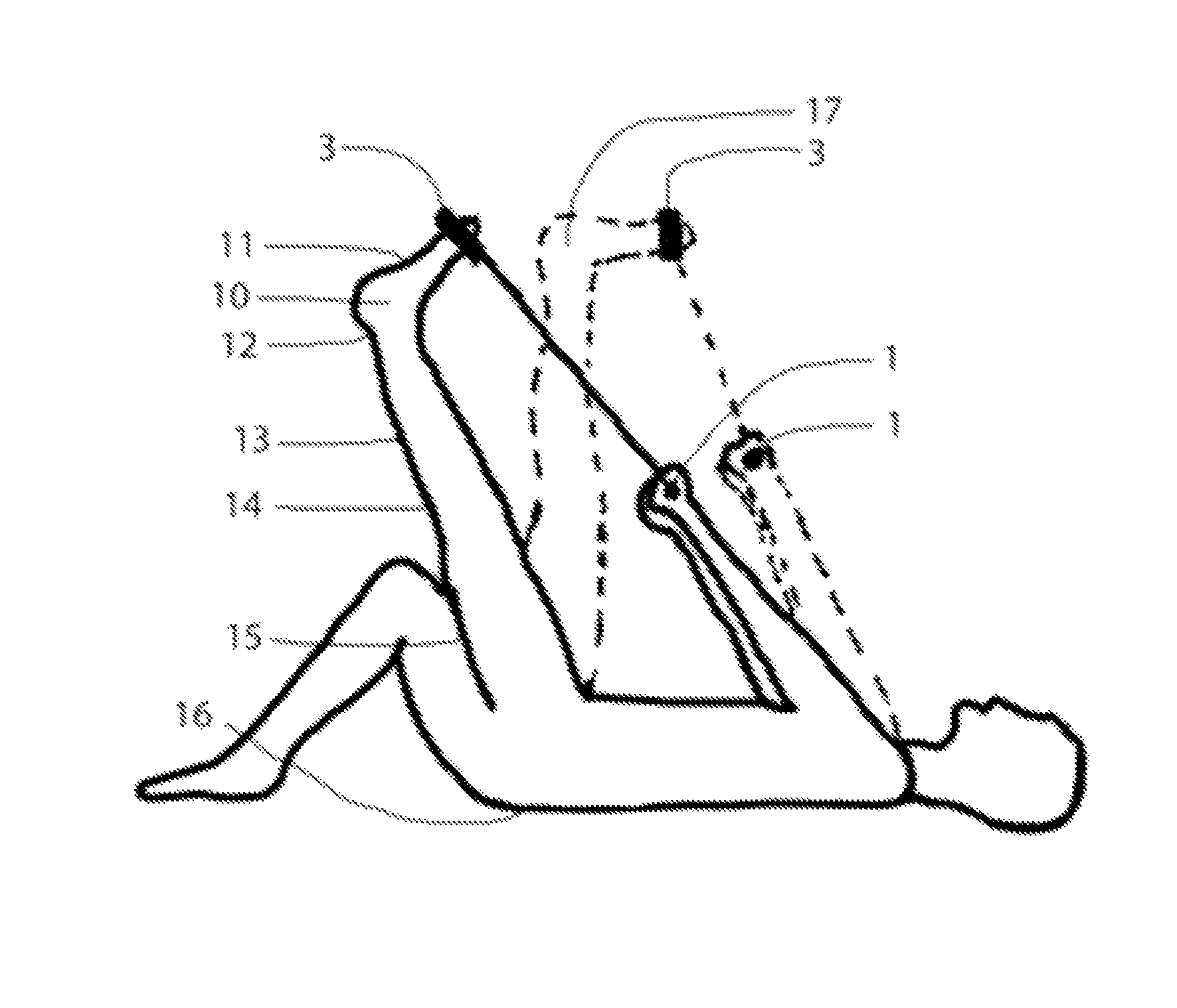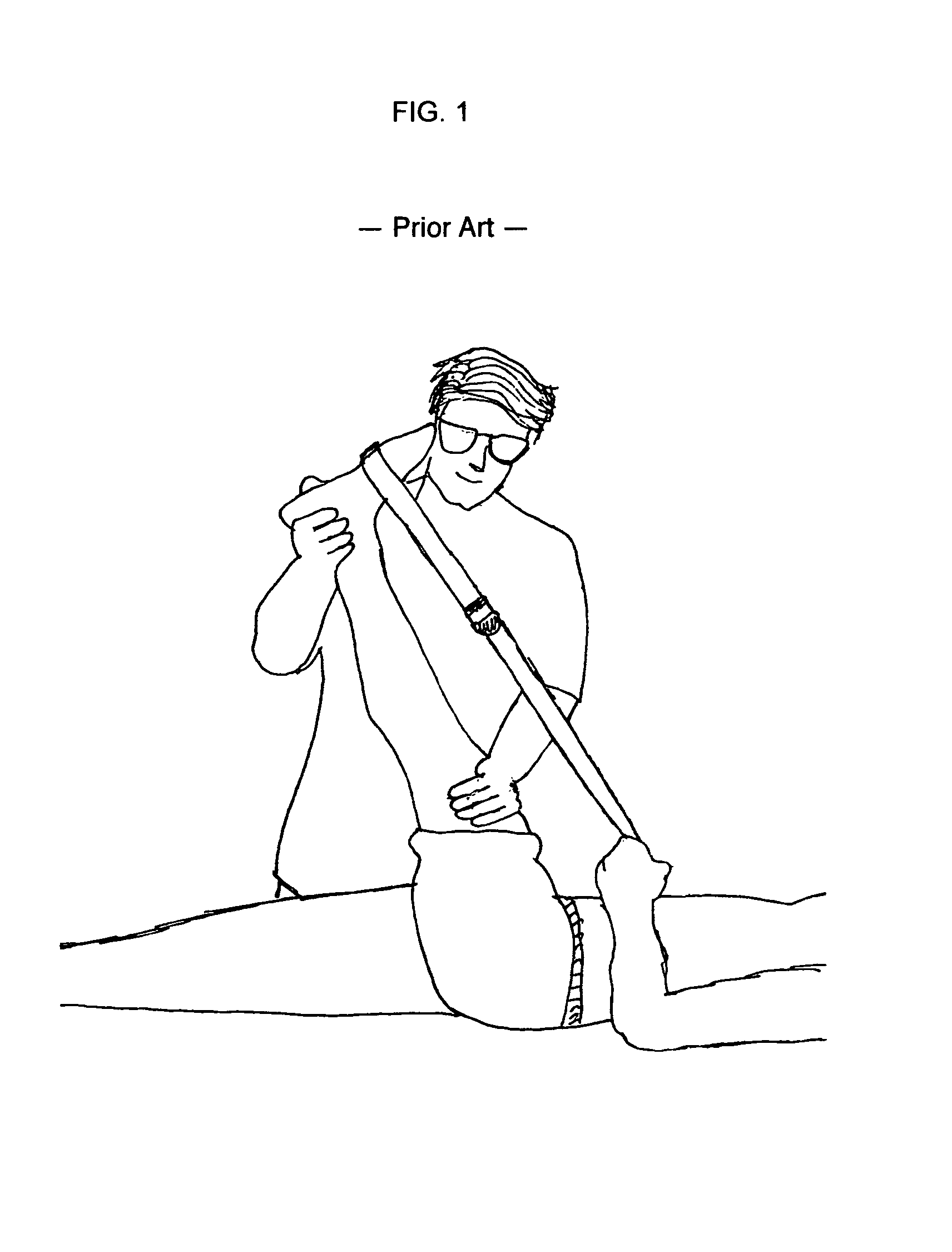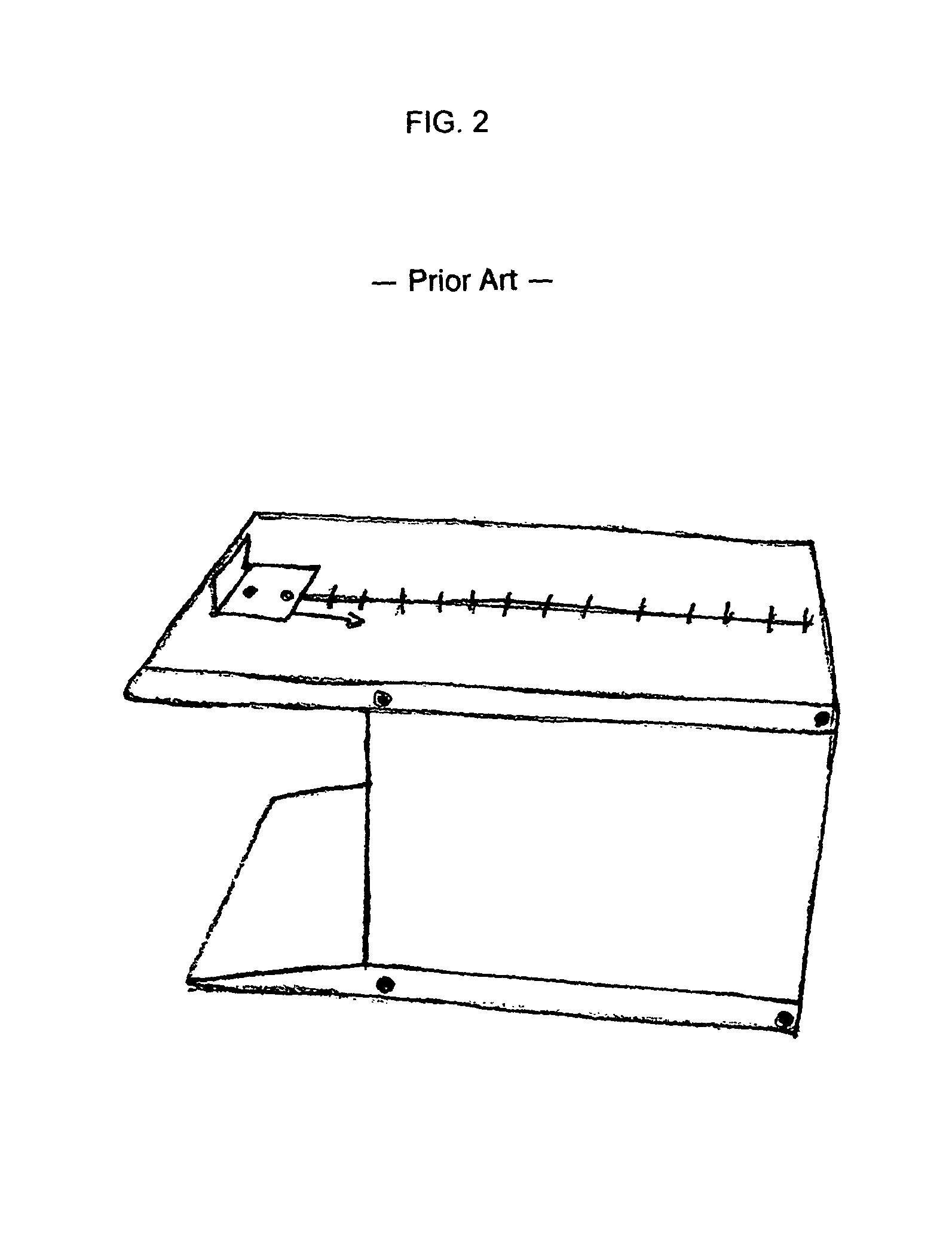Handheld extremity flexibility evaluation and treatment device
a handheld, extremity flexibility technology, applied in the field of tissue evaluation and treatment, can solve the problems of improper evaluation and treatment regimen, and inability to provide users with reliable and consistent treatment, so as to reduce trips, eliminate pain, and even more difficult treatment regimen for users
- Summary
- Abstract
- Description
- Claims
- Application Information
AI Technical Summary
Benefits of technology
Problems solved by technology
Method used
Image
Examples
Embodiment Construction
[0014]FIG. 1 shows the prior art practice of a medical professional treating treating extremity tissue. The user is performing a passive stretch on the posterior lower extremity by holding a strap that is releasably engaged with the extremity by wrapping the strap around the metatarsal pad of the foot. FIG. 2 shows a device that a user may place his feet on and push a slidable indicator along a track to provide the user with a indication of the user's lumbar and hamstring flexibility. The device weighs approximately 15 pounds and is bulky. The device does not provide a means for treatment. An apparatus described in the Burek patent shows a large stationary device for stretching and evaluating tissue using several measures.
[0015]The known portable tissue stretching devices do not properly allow the user to control the treatment intensity because of the need to reposition when increasing stretch intensity, and leave the user wondering whether or not he has stretched properly; known po...
PUM
 Login to View More
Login to View More Abstract
Description
Claims
Application Information
 Login to View More
Login to View More - R&D
- Intellectual Property
- Life Sciences
- Materials
- Tech Scout
- Unparalleled Data Quality
- Higher Quality Content
- 60% Fewer Hallucinations
Browse by: Latest US Patents, China's latest patents, Technical Efficacy Thesaurus, Application Domain, Technology Topic, Popular Technical Reports.
© 2025 PatSnap. All rights reserved.Legal|Privacy policy|Modern Slavery Act Transparency Statement|Sitemap|About US| Contact US: help@patsnap.com



